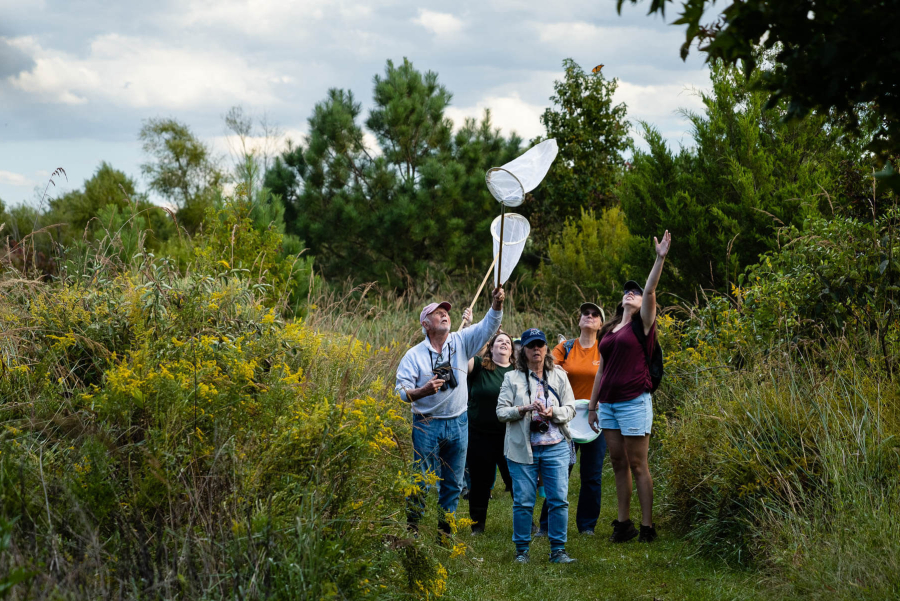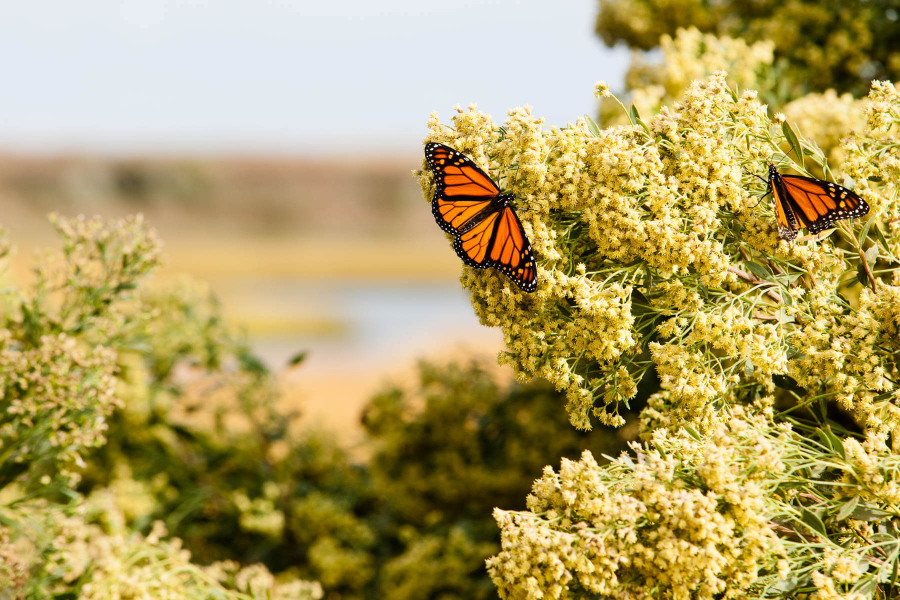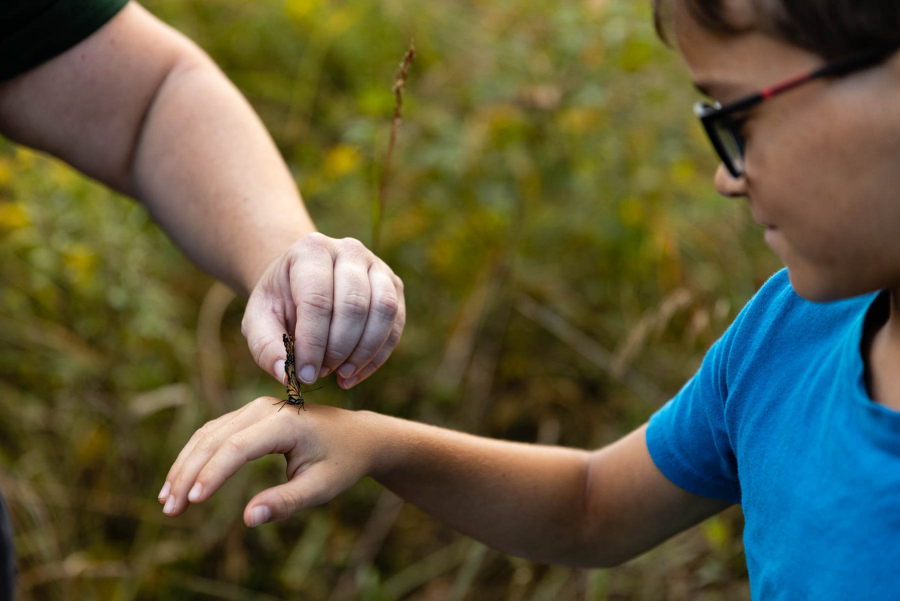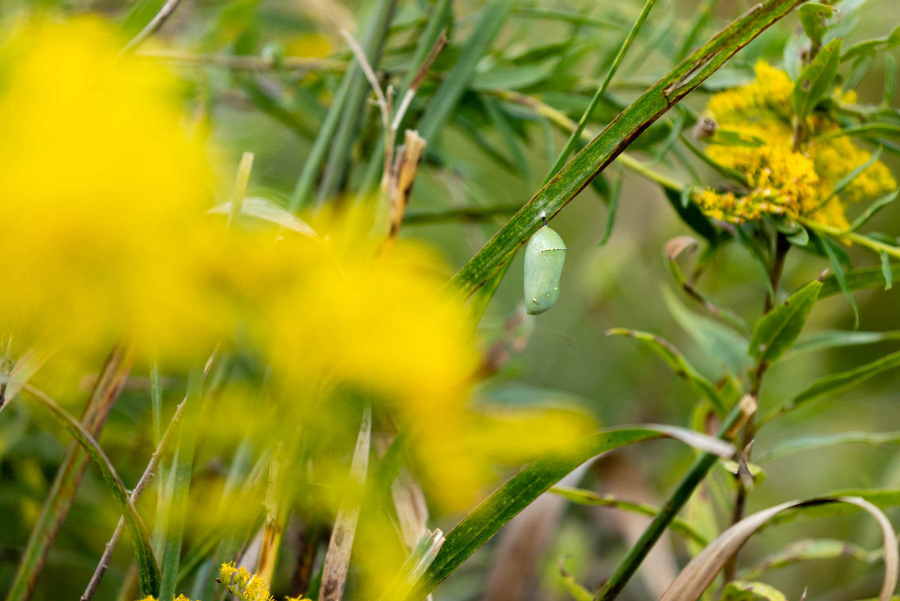Tagging along with monarch butterflies
Community science has been telling monarchs’ story for 50 years

The annual journey of the monarch butterfly resonates with many people living along its path. The overwintering monarch’s arrival in Mexico, for example, coincides with Día de los Muertos and is embedded in traditional celebrations of the holiday. And a backyard visit in the Chesapeake region by a wayward adult monarch or its caterpillars is a reminder that people and nature are interconnected on a continental scale.
It wasn’t until 1972 that thousands of community scientists helped researchers locate the eastern monarch’s overwintering grounds in the mountainous oyamel fir forests of central Mexico. Those volunteers solved the mystery by tagging individual butterflies—which weigh just half a gram on average—with tiny tags in the same manner that researchers band birds to track their migration patterns.
Since then, migratory monarchs have been decimated by increased pesticide use, as well as habitat loss, at every stop of its journey. Its host plant, milkweed, has fallen victim to agricultural herbicides and increased development, and deforestation and climate change threaten the mere dozen sites where butterflies cluster by the millions per acre. In 2022, migratory monarch butterflies were added to the International Union for Conservation of Nature (IUCN)’s Red List of Threatened Species as being in danger of extinction.
In light of threats and population declines, tagging monarch butterflies continues to be an important facet of its conservation, as well as a way for more people to feel connected to this internationally important species.
Monarch Watch, operated out of the University of Kansas, is in its 30th year of a nationwide community science effort to tag monarch butterflies. Every year, nature centers, schools and other organizations hold events to introduce people to the ongoing effort.


One such event was held in late September at Pickering Creek Audubon Center, which protects over 460 acres in Talbot County, Maryland. Over a dozen volunteers listened as Mary Helen Gillen, Pickering’s director of education, explained the monarch’s life history, displayed maps of the monarch’s overwintering grounds and then showed how the delicate wings of a monarch can be fitted with a tiny sticker bearing an alphanumeric code.
“Ultimately what happens is volunteers all across the United States and down in Mexico work to collect those [tagged butterflies], particularly in their overwintering groves in Mexico,” Gillen said. “And sometime next year, the list of recovered tags will be published.”
In recent years, Gillen recalled that one monarch tagged at Pickering Creek in September of 2017 was eventually captured again in February of 2018 inside one of the reserves that monarchs use to overwinter in Mexico.
“It’s just a really fun surprise to have that happen,” Gillen said.
The volunteers also learned that it’s important to support the types of native, nectar-laden plants that fuel the monarch’s survival along its migration route throughout the year. The group filed along trails overflowing with goldenrod, asters, white snakeroot and other late-blooming wildflowers.

No one managed to catch the two or three fleeting monarchs seen flitting through the area, but no one left the peaceful nature trails disappointed, either. Despite the monarch’s fickle nature, there were several other butterfly species that Gillen scooped up to offer a closeup look, in addition to the many bees and wasps doing the important work of pollinating.
In the early fall in Maryland, “while it can be hit or miss on a given day…you're going to see lots of pollinators on those flowers,” Gillen said. “And that will bring our monarchs in.”
If you would like to support monarch butterflies and other pollinators, you can find a Monarch Watch event near you. You can also support insect biodiversity in other ways, like limiting the use of pesticides at home and adding native plants to your garden. Your home-grown habitat can even be registered as an official monarch waystation.

Comments
There are no comments.
Thank you!
Your comment has been received. Before it can be published, the comment will be reviewed by our team to ensure it adheres with our rules of engagement.
Back to recent stories